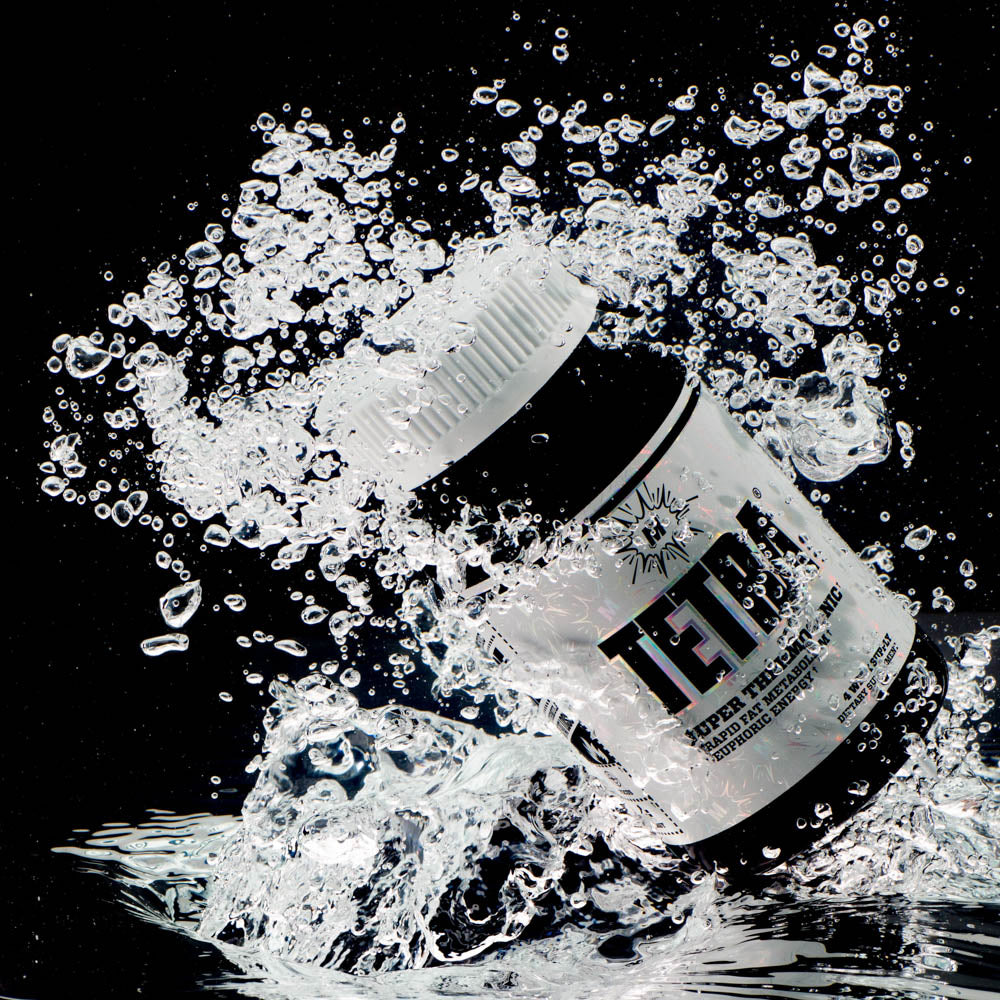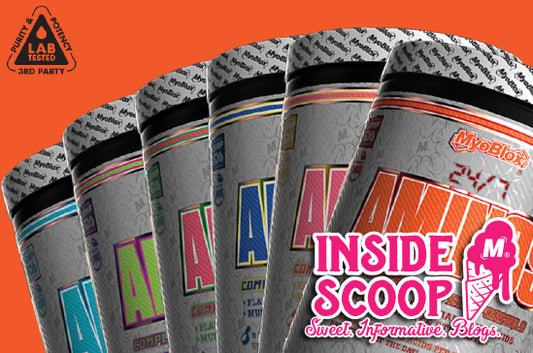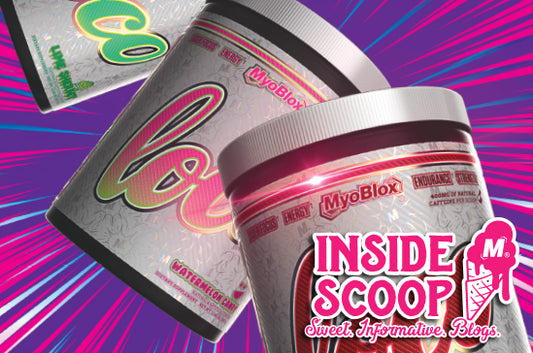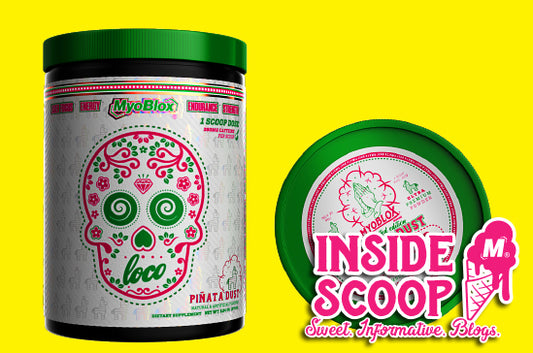
TETRA®: BEHIND THE LABEL
Tetra® is a premium, feel-good fat burner that contains both stimulant and non-stimulant ingredients which has been shown to increase fat loss and calorie burning. A unique blend of stimulants, nootropics, and fat burners, Tetra® can increase your energy, focus, and daily calorie burning via different mechanisms, as well as elevating your mood from its potent Euphoria Matrix.
Avantra Z® (synephrine): Synephrine: A natural alkaloid from the plant Citrus aurantium, synephrine is a beta-2 adrenergic receptor agonist. Chemically, synephrine is similar in structure to ephedrine, the one of the strongest and most widely used stimulants ever. Synephrine has been shown in humans to increase basal metabolic rate(BMR), as well as the rate of lipolysis, the breaking down of fats into free fatty acids to be burned for energy.1 In one study, healthy participants taking 50mg of synephrine burned an extra 65kcal within 75min of consumption, which is why it's been used widely as a thermogenic and fat loss ingredient.2 There is also a nice synergistic response with the addition of caffeine, both in fat-burning and CNS stimulation, as well as being much safer than other phenylethylamine(PEA) compounds. Synephrine does not seem to cause a significant increase in blood pressure, vasoconstriction, or other cardiovascular side effects, even when combined with caffeine.3 Typical doses are between 25-50mg/d.
Paradoxine®(6-paradol):Paradoxine is a trademarked version of the spice Afromomum melegueta, commonly known as grains of paradise. Paradoxine® is standardized for active aromatic ketones including 6-gingerol, 6-shogaol, 6-gingerdione, and a guaranteed 12.5% of the main active 6-paradol. It is botanically related to ginger and has been traditionally used to aid in digestive and GI health. The main mechanism for fat loss for grains of paradise seems to be by activation of brown adipose tissue(BAT) and whole-body energy expenditure.4 BAT is considered metabolically active fat tissue and is primarily used to regulate body temperature by dissipating energy as heat, while white adipose tissue(WAT) is mostly used for the storage of excess energy as triglycerides. There is an inverse correlation between the amount of BAT one has and total body fat.5 Paradoxine® at a dose of 40mg/d was shown to increase total energy expenditure by 6% and decrease visceral fat in healthy subjects via BAT activation.6 Typical doses of Paradoxine® are 40mg, 2-3x a day.
Higenamine: Higenamine: Higenamine is an interesting and underused stimulant that is naturally found in many plant species, with Nelumbo nucifera being the most common. Structurally, higenamine is a combination of the amino acid L-tyrosine and the neurotransmitter dopamine, with the PEA backbone subtly hidden in the molecule. Higenamine is another beta-2 adrenergic receptor agonist that has a very quick onset time and reaches peak levels in <7 minutes, but also seems to have nootropic properties. Higenamine works by increasing levels of cyclic adenosine monophosphate(cAMP), a messenger molecule that has effects on glucose and fat metabolism, by activating the enzyme adenylate cyclase.7 This mechanism is similar to how caffeine works, and caffeine can even potentiate the production of cAMP, which leads to more free fatty acids in the bloodstream to be burned for energy. Like most beta-2 agonists, higenamine also has a bronchodilation effect, but more interestingly a strong vasorelaxation effect, which is not common among stronger stimulants.8 Its vasodilation effect can help was even strong enough to investigate the use of higenamine for erectile dysfunction. There is only one human study on higenamine, but it was combined with caffeine and yohimbine(The study did not list the amount of higenamine, but did list caffeine at 270mg). It did show a significant increase in calorie burning(around 1.5kcal extra burned per hour), calories burned from fat, circulating free fatty acids, and smooth muscle contraction force.9 Typical doses seem to be in the 25-75mg/d range.
Sulbutiamine: Sulbutiamine is a derivative of thiamin, or vitamin B1. Thiamin is an essential vitamin that is used in the biosynthesis of GABA and acetylcholine. Chemically, it is 2 modified thiamin molecules bound together by a disulfide bridge. This makes the molecule much more lipophilic or fat soluble which allows for greater ability to cross the blood-brain barrier compared to thiamin. In fact, sulbutiamine can raise brain levels of thiamin 2.4x greater than thiamin itself.10 This is essential since sulbutiamine works in the brain and affects your neurotransmitters including glutamate, acetylcholine and dopamine.11 Sulbutiamine is medicinally used in people with thiamin deficiencies, since it can reach your brain more effectively than thiamin. Sulbutiamine is starting to be more commonly used as a nootropic supplement because of its unique properties and mechanism of action. Sulbutiamine works by stimulating glutamate, one of your brain's primary excitatory neurotransmitters that is responsible for memory formation, learning, and neural communication. It also has been shown to lower dopamine levels in your prefrontal cortex, which might sound bad at first, but your body will actually increase the number of dopamine receptors due to this reduced dopamine levels.12 This, in turn can increase your overall dopamine sensitivity.13 Dopamine, a neurotransmitter that critical to your body's reward-motivation system, is responsible for a sense of euphoria and pleasure. Sulbutiamine is known to elicit feelings of increased wakefulness and anti-fatigue. Typical doses are between 200-1000mg/d, spaced out over multiple doses.
Fun fact: Sulbutiamine was first synthesized in Japan in 1936 by a Naval doctor as a way to supplement for vitamin B1 deficiencies, which are common in most Asian countries. It was so successful that the Japanese military used it in WW2 and ever since.
Nivadren™: The most unique ingredient in the formula, Nivadren™ is an extract of the plant species Galanthus Nivalis, which contains galantamine, a potent acetylcholinesterase(AChE) inhibitor. Galantamine is a dual-mode of action molecule that both inhibits AChE, the enzyme that breaks down acetylcholine, as well as being an allosteric modulator(something that does not bind to the main receptor site, but a different location but still alters the enzyme) of nicotinic acetylcholine receptors, which can increase the amount of ACh released and used. Galantamine is so potent that it's also a pharmaceutical drug for Alzheimer's Disease(AD). In fact, all the data for galantamine is for AD. It is worth noting however, that galantamine has been safe, well-tolerated, and effective for increasing cognition, including a 12 month study.14 Galantamine has also be shown to have an anti-anxiety effect. Typical doses are 2-8mg/d.
References:
- Haaz, S., et al. "Citrus aurantium and synephrine alkaloids in the treatment of overweight and obesity: an update." Obesity reviews 7.1 (2006): 79-88.
- Stohs, Sidney J., et al. "Effects of p-synephrine alone and in combination with selected bioflavonoids on resting metabolism, blood pressure, heart rate and self-reported mood changes." International journal of medical sciences 8.4 (2011): 295.
- Seifert, John G., et al. "Effect of acute administration of an herbal preparation on blood pressure and heart rate in humans." International journal of medical sciences 8.3 (2011): 192.
- Sugita, Jun, et al. "Grains of paradise (Aframomum melegueta) extract activates brown adipose tissue and increases whole-body energy expenditure in men." British Journal of Nutrition4 (2013): 733-738.
- Saely, Christoph H., Kathrin Geiger, and Heinz Drexel. "Brown versus white adipose tissue: a mini-review." Gerontology1 (2012): 15-23.
- Sugita, Jun, et al. "Daily ingestion of grains of paradise (Aframomum melegueta) extract increases whole-body energy expenditure and decreases visceral fat in humans." Journal of nutritional science and vitaminology1 (2014): 22-27.
- Wong, KK; Lo, CF; Chen, CM (1997). "Endothelium-dependent higenamine-induced aortic relaxation in isolated rat aorta". Planta Medica. 63 (2): 130–2.
- Lee, Sang-Rok, et al. "Acute oral intake of a higenamine-based dietary supplement increases circulating free fatty acids and energy expenditure in human subjects." Lipids in health and disease 12.1 (2013): 148.
- Herrmann, Markus, et al. "Homocysteine increases during endurance exercise." Clinical chemistry and laboratory medicine 41.11 (2003): 1518-1524.
- Bettendorff L, Weekers L, Wins P, Schoffeniels E. Injection of sulbutiamine induces an increase in thiamine triphosphate in rat tissues. Biochem Pharmacol. 1990;40(11):2557-2560.
- Trovero, Fabrice, et al. "Evidence for a modulatory effect of sulbutiamine on glutamatergic and dopaminergic cortical transmissions in the rat brain." Neuroscience letters1 (2000): 49-53.
- Mitsushima, D. et al. A cholinergic trigger drives learning-induced plasticity at hippocampal synapses. Nat. Commun. 4:2760 doi: 10.1038/ncomms3760 (2013).
- Hong S. Dopamine system: manager of neural pathways. Frontiers in Human Neuroscience. 2013;7:854. doi:10.3389/fnhum.2013.00854.
- Raskind, Murray A., et al. "Galantamine in AD A 6-month randomized, placebo-controlled trial with a 6-month extension." Neurology12 (2000): 2261-2268.








